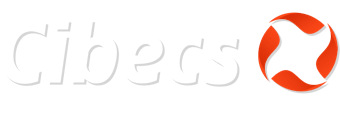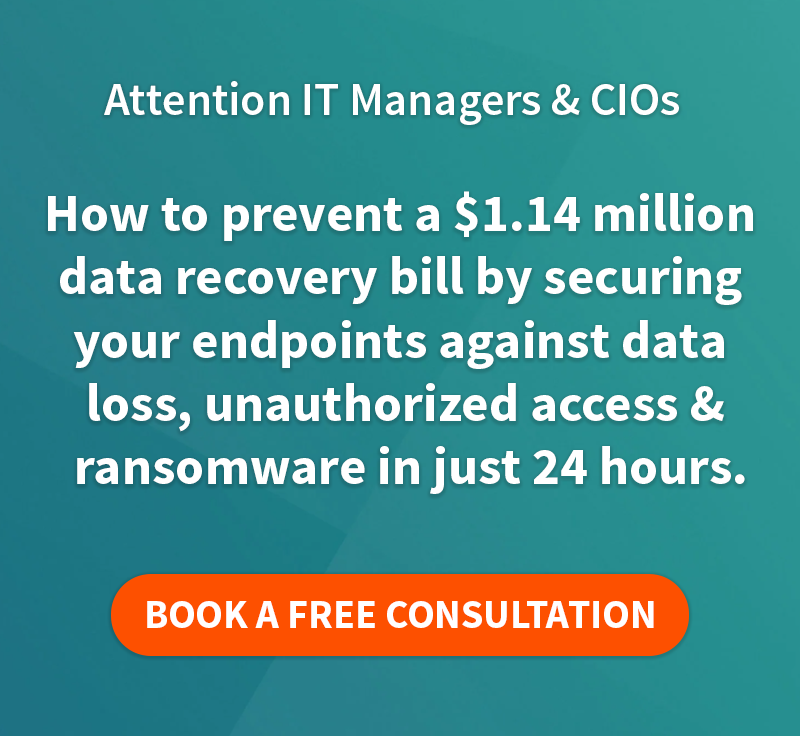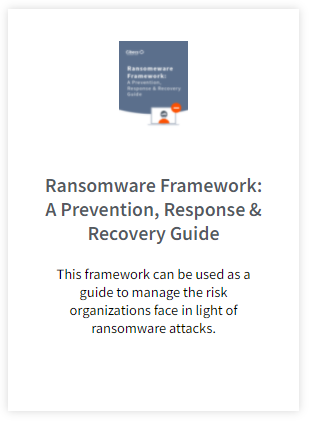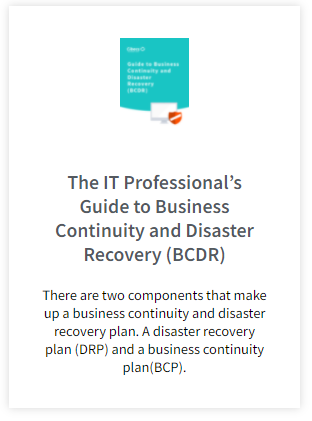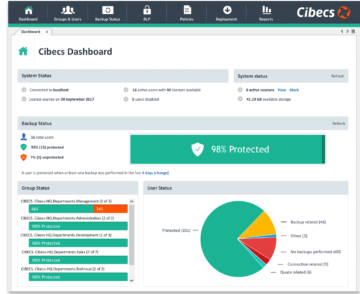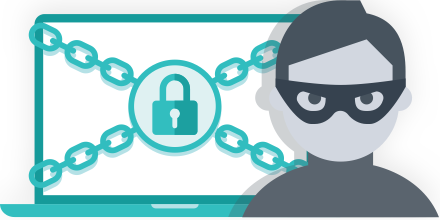The best way to protect yourself, your users and your business against ransomware is by setting up a proactive defence. The ransomware statistics paint a frightening picture for anyone in charge of IT: In Q3 2016 alone, 18 million new malware samples were captured. Source: Panda Labs What that means is that the criminals…
What data backup software features IT should be looking for to ensure data security and compliance for your business
When businesses look for a data backup software solution, it’s important to understand what data backup software features ensure data security and compliance. This blog post looks at what data backup software features IT should require in a solution that provides them with data security and data security compliance.
Data Backup Software Features:Data Protection Requirements | Security & Compliance
Download our White Paper that outlines 8 Strategies for Endpoint Data Protection
Data Backup Software Features | Business Security Requirement 4
Security & Compliance
Data backup software must equip organizations with secure data backups and data recovery, the solution must ensure that all business data is protected from unauthorized and unlawful access by third parties and must provide effective endpoint device protection. Businesses need a solution that protects their confidential data and helps them ensure that all data migration projects are secure and simpler.
A technical overview: Data Backup software features for security and compliance
1.The data backup software should provide version control of backed up files.
1.1. The system should have features that provide the ability to restore previous versions of a file.
1.2. The data backup software should retain files that are deleted on the endpoint for auditing and legal purposes. This allows companies to pull an audit report and to improve data security.
2. The software should ensure strong Data encryption on backed-up data.
2.1. Data Backup Software supplier must be a certified Cryptography Service Provider (CSP/2007/005) SADOC RFC2616, registered with the Department of Communications.
2.2. Must utilize a standard for encryption: SSL, BLOWFISH, SHA-1, MD5 and Kerberos.
2.3. The backup data for each user must be encrypted using Blowfish 448bit (CBC mode) before being transmitted to the Backup Server.
2.4. The libraries that perform the encryption and decryption of data must be part of the standard SDK’s Cryptography Extension. A symmetric encryption key should be uniquely generated per user to ensure that access to data remains on a ‘per user’ level.
2.5. Each file must be encrypted using a combination of the encryption key and a random salt. This should provide additional level of security by protecting against deciphering techniques such as brute force attacks.
3. System must be able to backup user data residing on encrypted hard drives.
3.1. Must support backing up data on a computer using full disk encryption or a volume based encryption system.
These listed data backup software features help ensure that business data is effectively protected and secure.
Visit our Data Backup resource center for more information on endpoint data protection
FEATURED POSTS
IT Managers: How to Protect Your Users Against Ransomware
The best way to protect yourself, your users and your business against ransomware is by setting up a proactive defence. The ransomware statistics paint a frightening picture for anyone in charge of IT: In Q3 2016 alone, 18 million new malware samples were captured. Source: Panda Labs What that means is that the criminals…
Cibecs Joins Silicon Valley Top 20
Cibecs Joins Silicon Valley Companies to be Listed on Top 20 Most Promising Storage Solution Providers Cibecs, a leading South African endpoint backup, protection and security solution, has been recognised as one of the 20 Most Promising Storage Solutions by CIO Review. The list, compiled by industry insiders, highlights leading global technology providers that offer effective…
4 Signs You Need a New Endpoint Data Backup Solution
With more workers depending on laptops it is more important than ever to ensure that the work protected and stored on those devices is backed up and protected. Forrester Research says that 45% of corporate executives don’t follow policies for data use and handling. Underlining how at risk almost half of a business’s data actually…
